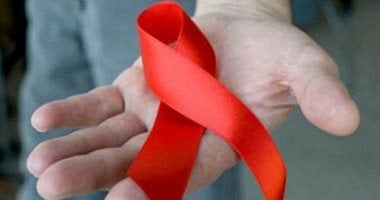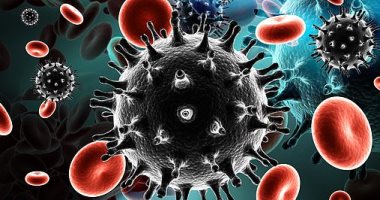HIV is a virus that damages the immune system. Untreated HIV affects cells CD4 And it kills it, a type of immune cell called a T cell. HIV is transmitted through body fluids that include “blood, semen, vaginal and rectal fluids, breast milk.”
In conjunction with the World AIDS Day, the seventh day provides everything you need to know about AIDS, according to the site healthline
Q: What is AIDS?
AIDS is a disease that can affect people with HIV, and it is the most advanced stage of HIV, but just because a person is infected with HIV does not mean that AIDS will develop..
This makes a person with AIDS susceptible to a wide range of diseases, including “pneumonia, tuberculosis, oral thrush, a fungal condition in the mouth or throat, cytomegalovirus”. (CMV) “A type of herpes virus, cryptococcal meningitis, a fungal condition in the brain, toxoplasmosis, a brain condition caused by a parasite.”

Q: How is the infection transmitted?
Some of the ways that HIV is transmitted from person to person include the following:
1: It is through sex which is the most common method of transmission.
2: By sharing needles, syringes, and other things to inject drug use.
3: By sharing tattoo equipment without sterilizing it between uses.
4: During pregnancy, labor or childbirth from a pregnant woman to her baby.
5: While breastfeeding.
6: By “fermenting” or chewing a child’s food before feeding it to them.
7: Through exposure to blood, semen, vaginal and rectal fluids, and breast milk of a person with HIV, such as through a needle
The virus can also be transmitted through blood transfusions or organ and tissue transplants. However, stringent HIV testing among blood, organ, and tissue donors ensure that this is very rare in the United States..
Q: What are the causes of AIDS?
AIDS is caused by HIV, not everyone can get AIDS if they do not become infected with HIV.، Healthy individuals have a number CD4 From 500 to 1,500 per cubic millimeter, without treatment, HIV continues to multiply and destroy cells CD4. If the number of cells decreases CD4 A person has about 200, it means that he has AIDS.
Also, if a person with HIV develops an opportunistic infection associated with HIV, it can still be diagnosed with AIDS, even if the number of cells CD4 Its own is higher than 200.
Q: What tests are used to diagnose HIV?
Several different tests can be used to diagnose HIV, and health care providers determine which test is best for each person.
Antibody / antigen tests are the most commonly used tests. Usually positive results can appear inside 18-45 days after a person initially becomes infected with HIV.
These tests check the blood for antibodies and antigens. An antibody is a type of protein that the body makes in response to infection. On the other hand, an antigen is the part of the virus that activates the immune system.
These tests only check the blood for antibodies. Between 23 and 90 days after transmission, most people will develop detectable HIV antibodies, which can be found in blood or saliva..
These tests are done using blood tests or oral swabs, and are not needed. Some tests provide results in 30 minutes or less and can be done in a healthcare provider’s office or clinic.
Q: What are the symptoms of AIDS and HIV?
The first few weeks after a person becomes infected with HIV is called the acute infection phase, during this time, the virus replicates rapidly. A person’s immune system responds by producing HIV antibodies, which are proteins that take action to respond to infection.
During this stage, some people initially have no symptoms. However, many people experience symptoms in the first month or so after contracting the virus, but they often are not aware that HIV is causing these symptoms..
This is because the symptoms of the acute phase can be very similar to the symptoms of influenza or other seasonal viruses, such as:
It may be mild to severe
It may last anywhere from a few days to several weeks
Early symptoms of HIV can include:
Fever
shudder
Swollen lymph nodes
General aches and pains
Skin rash
Sore throat
Headache
nausea
Anxious stomach
Since these symptoms are similar to common illnesses such as the flu, a person with them may not think they need to see a healthcare provider.

And even if they do, a healthcare provider may suspect influenza or a mononucleosis and may not even consider HIV..
Whether a person has symptoms or not, the viral load during this period is very high. The viral load is the amount of HIV present in the bloodstream.
A high viral load means that HIV can be easily transmitted to another person during this time. The initial symptoms of HIV usually resolve within a few months when the person enters the chronic or clinical latency phase of HIV. This stage can last for many years or even decades with treatment.
– .


